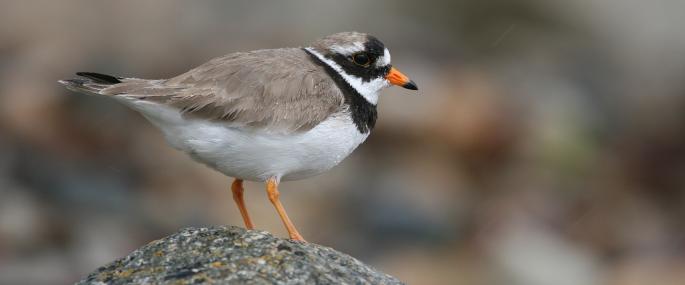A small, rotund wader, the ringed plover nests on bare gravel, shingle and sand at the coast and around flooded gravel pits and reservoirs. Unlike the little ringed plover to which it is quite similar in appearance, the ringed plover is a resident, although it is joined by wintering birds from Europe. Like other plovers, it forages for invertebrates and crustaceans in a particular way: standing and watching, running forward, pecking, then standing still again. Underground prey is tempted to the surface by 'foot-trembling' - the ringed plover taps its feet fast on the ground to mimic raindrops.
Breeding populations of ringed plovers are declining and are under threat from the development, drainage and pollution of their wetland and coastal homes. The Wildlife Trusts manage many wetland nature reserves for the benefit of the wildlife they support. You can help by supporting your local Trust and becoming a member; you'll find out about exciting wildlife happenings, events on your doorstep and volunteering opportunities and be helping local wildlife along the way.
